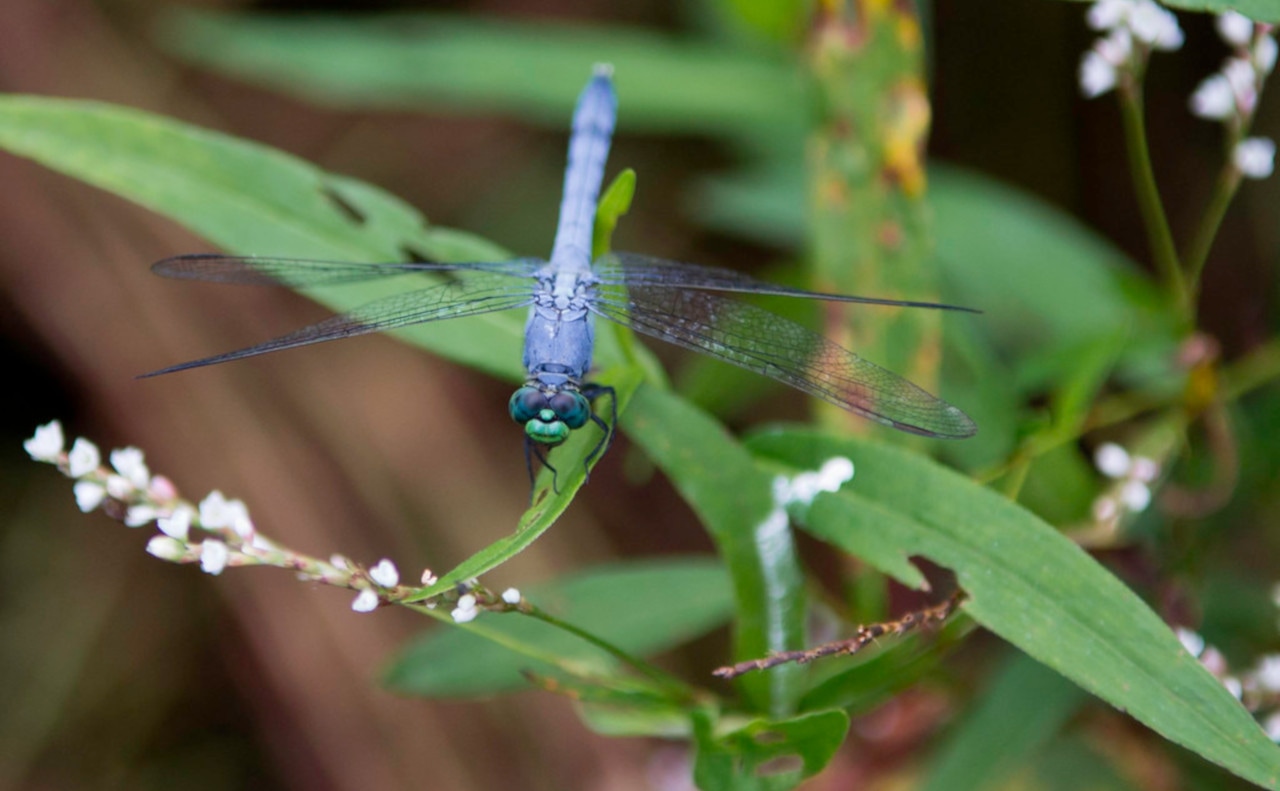Insects in the Pond
[[translate(episode,'title')]]
[[translate(episode,'audioCredit') || translate(episode,'credit')]][[translate(episode,'title')]]
[[translate(episode,'audioCredit') || translate(episode,'credit')]]Audio Transcript
You are standing with the pond behind you. The remainder of the Eco Trail is to your left, and there are trees with a picnic area in front of you.
Insects in the Pond: The pond supports a variety of arthropods, including insects, such as dragonflies, and spiders. An arthropod is an animal with no backbone or skeleton. Arthropods are the most abundant group of animals on earth and play a vital role in the food chain. One spider you might find at the pond is the banded garden spider, which grows up to three inches long, including its legs. The belly of the spider is oval shaped and horizontally striped with white, black, yellow, and gray bands. The legs have orange and black stripes.
Dragonflies use vegetation growing around the pond for shelter and to hunt insects such as mosquitoes. A frequent flier is the great blue skimmer, which is one of the largest dragonflies, growing over two inches long. Its wings include black bands on the outer edges and spots. They have white faces with blue eyes. The male’s torso is light blue and the female’s is brown.
If you would like, reach out and touch images of the arthropods on the right half of the sign. The image of the banded garden spider is on top and sits on its web in brown grass. As you touch, take note of how wide the belly is and how long the legs are. The photo below the spider is of the male great blue skimmer on a green leaf. Can you feel the shape of its wings and body?
There are other types of animals without a backbone, like aquatic macroinvertebrates. While these animals live without a backbone, they can be seen with the naked eye. Snails, and crayfish are examples of aquatic macroinvertebrates. They are important to the pond because they improve water quality as filter feeders and provide food for fish and other animals. Listen for the many different types of insects chirping in the Park.
At this point of the trail, there is a v-shaped intersection. If you stay to the left and continue circling, you remain on the Eco Trail and near the pond. The next sign is 220 feet on the right. If you go to the right at this intersection, the paved path turns into gravel and leads to the picnic benches and the staff parking lot.
